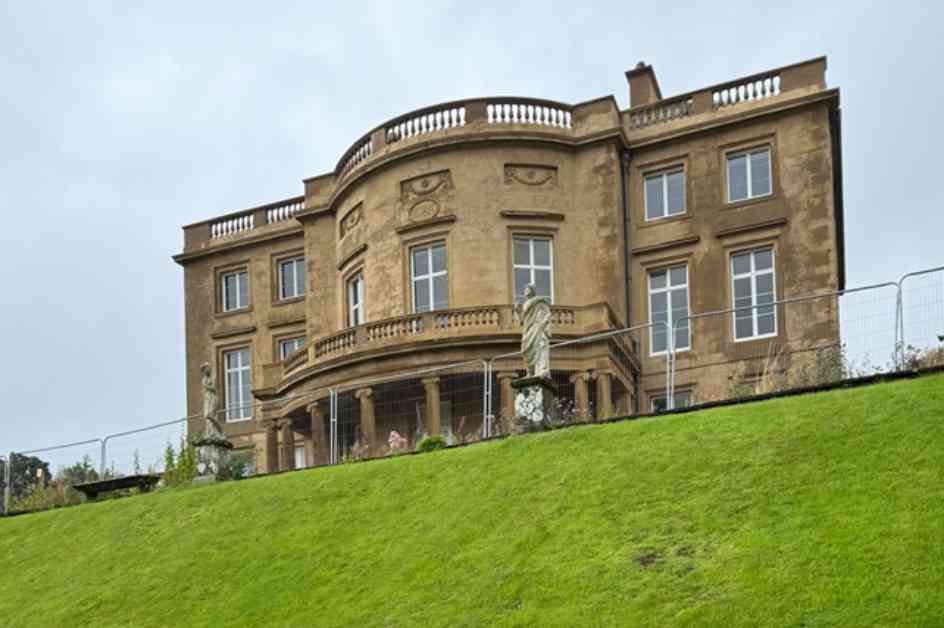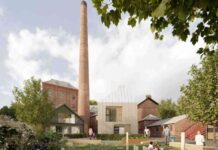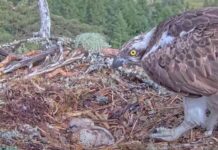Social Investment Scotland has recently provided a £600,000 funding boost to the Haining Charitable Trust in Selkirk, enabling them to continue the restoration of the historic Haining House. This 18th-century home, along with its 160 acres of loch-side woodland and parkland, was gifted to the community by former owner Andrew Nimmo-Smith in 2009. The trust has been overseeing the property since then, with the goal of preserving its rich history and making it a hub for the local community.
The Restoration Project
The restoration project, which began in 2019 with a development plan totaling £3.75 million, aims to refurbish the property to its former glory. While the rest of the estate has remained open to the public, the main house was closed in 2021 due to the discovery of extensive dry rot. This setback, however, has not deterred the trust’s commitment to the project.
Michelle Ballantyne, CEO and trustee of the Haining Charitable Trust, expressed gratitude for the funding from SIS, stating that it was the final piece of the puzzle needed to complete the restoration works. She emphasized the importance of bringing the house back to life and ensuring its structural safety for future generations to enjoy.
Community Hub and Job Creation
Once the restoration is complete, Haining House is set to become a vibrant community hub, hosting a variety of events such as art exhibitions, cultural programs, and historical tours. Additionally, a commercial events arm will offer wedding services and private use of the Palladan Georgian villa, which was first built in 1794 and is listed as a category A historic property.
The project is also expected to create up to 10 new jobs for local residents, providing a boost to the economy and supporting the community’s growth. This initiative aligns with the trust’s vision of developing the estate as “a place for everyone,” promoting inclusivity and engagement among Selkirk’s residents.
Enhancements and Additions
In addition to the restoration of the main house, several enhancements and additions are planned for the Haining Estate. These include the installation of a lift for accessibility, new toilet and kitchen facilities, a link extension for seamless connectivity, and a new events marquee for outdoor gatherings. These upgrades will not only improve the visitor experience but also make the estate more attractive for various events and functions.
Furthermore, the former coach house has been redeveloped into artist studios, providing a creative space for local artists to work and collaborate. Additionally, holiday accommodation has been created in the stable flats and dairy cottage, offering visitors a unique lodging experience amidst the estate’s natural beauty.
The provision of accessible pathways around the grounds ensures that all visitors, regardless of mobility, can explore and enjoy the estate’s offerings. Moreover, the renovation of the estate’s original kennels has led to the establishment of the Dandie Dinmont Discovery Centre, in collaboration with the Dandie Dinmont Society and the Kennel Club.
Preserving History and Heritage
The Haining Estate holds a special place in history, particularly for its connection to the Dandie Dinmont terrier breed. Old Ginger, a terrier puppy born on the estate in 1842, is recognized as the father of the breed, with every Dandie Dinmont dog tracing its ancestry back to him. The establishment of the Dandie Dinmont Discovery Centre aims to celebrate this heritage and educate visitors about the breed’s origins and significance.
Chris Jamieson, head of investments at Social Investment Scotland, commended the progress made at the Haining Estate, noting the impressive transformation of the main house and the potential for it to serve as a valuable community asset. He highlighted the income generated from events held at the estate as a means to support various community initiatives focused on social inclusion and wellbeing.
In conclusion, the restoration funding provided by Social Investment Scotland has not only revitalized the Haining House but also rejuvenated the entire estate, making it a welcoming space for residents and visitors alike. The ongoing efforts to preserve the property’s history and heritage ensure that future generations can appreciate its significance and continue to enjoy its beauty and cultural offerings.
































